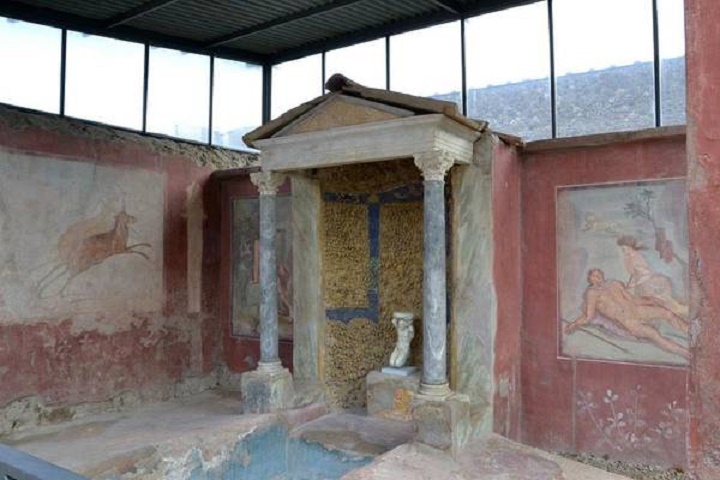A new itinerary in Pompeii with five domus including their restored, ancient gardens and a hall with over 100 archaeological finds at the Naples Archeological Museum opened on Wednesday as part of the Myths and Nature: from Greece to Pompeii exhibit. The exhibit is in the southern Campania region after success at Milan's Palazzo Reale.

Restructured in line with the new space that it is being held in and enriched with additional loans, the exhibition on nature as it is interwoven with human intervention is now part of an itinerary inside the Pompeii archaeological area, where the green spaces of the ancient domus have been restored.

''The aspect of the gardens,'' Pompeii superintendent Massimo Osanna said, ''that we want to offer visitors with the recent restorations and reopening to the public is an interpretation of places as they most likely were when they were created.''


The five domus to be visited are the Praedia of Iulia Felix and the homes of Loreius Tiburtinus, Venus in a Shell, Marcus Lucretius on Via Stabiana and the Fruit Orchard - all restored as part of the Grand Pompeii Project. There is also the Casa degli Amorini Dorati, already open.

The section ''Still Life'', set up inside the pyramid in the amphitheater, explores a genre that originated in the Graeco-Roman world with portraits of fruits and animals.

These frescoes were removed and placed in the Naples museum in the past and have only now returned for the first time to Pompeii as seeds, fruit and bread, restored after the volcanic ash covered them during the eruption of Vesuvius in 79 AD.

The 100 archaeological finds exhibited at the Sala della Meridiana in the Naples Archaeological Museum instead focus on landscapes, enchanted gardens, nature as a 'gift from the gods' and nature as a sign.
Source: ANSA [March 16, 2016]